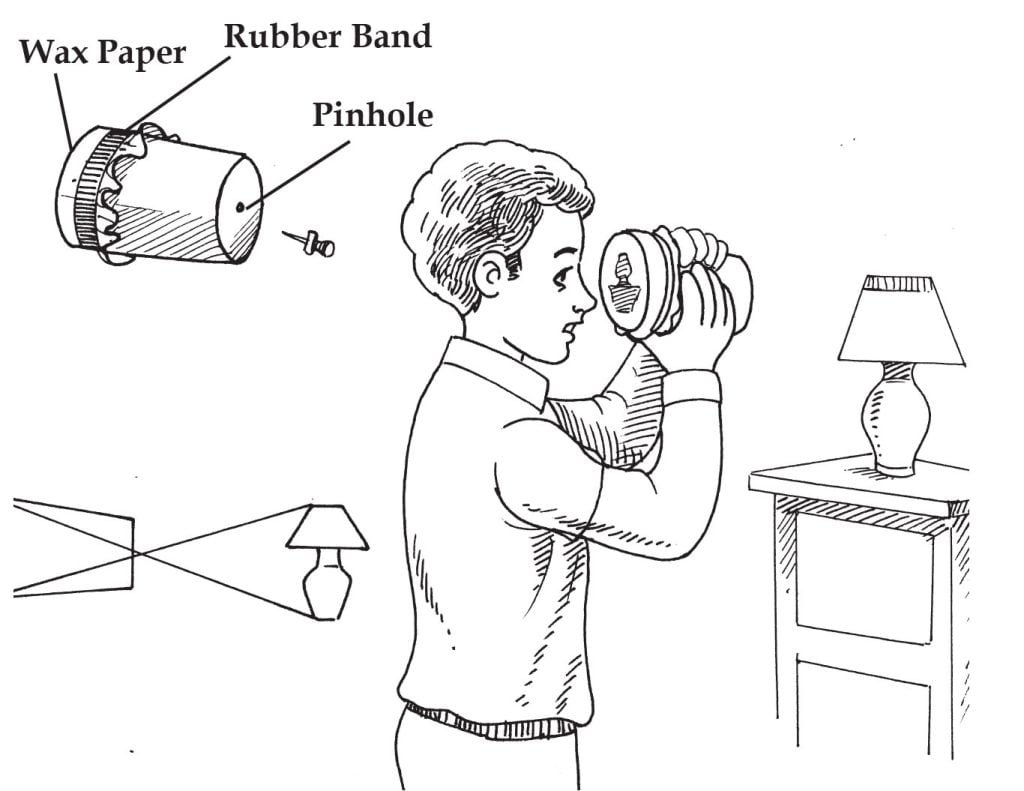
Take a look around you. Everything appears right-side up. Although this makes sense, yet it’s not how your eye sees it. Images that are cast upon your eye’s light-sensitive screen (called the retina) are upside down. It takes a learned brain trick to flip these images right-side up so that they may match the look of the real world.
Things Required:
Plastic cup
Wax paper
Rubber band
Pushpin
Pair of scissors
Directions:
Use the pushpin to punch a hole in the centre of the bottom of the cup. Cut out a piece of wax paper slightly larger than the mouth of the cup. Stretch this paper across the mouth of the cup. Use a rubber band to secure the paper.
Darken the room. Aim the pinhole at a bright window or lamp. Look at the wax paper. What do you see? How does the image compare to the actual scene?
This Is What Happens:
You’ve built a pinhole viewer. Light that came through the window entered into the hole of your viewer. After entering through the hole, the light rays continued on a straight path. This caused the upper light rays to strike the bottom part of the wax paper screen. Likewise, the lower light rays struck the upper part of the screen. The image that these rays produced was flipped upside down.
Here is a ray diagram that shows what happened when light from an object passed through the pinhole and was projected onto the viewing screen.

